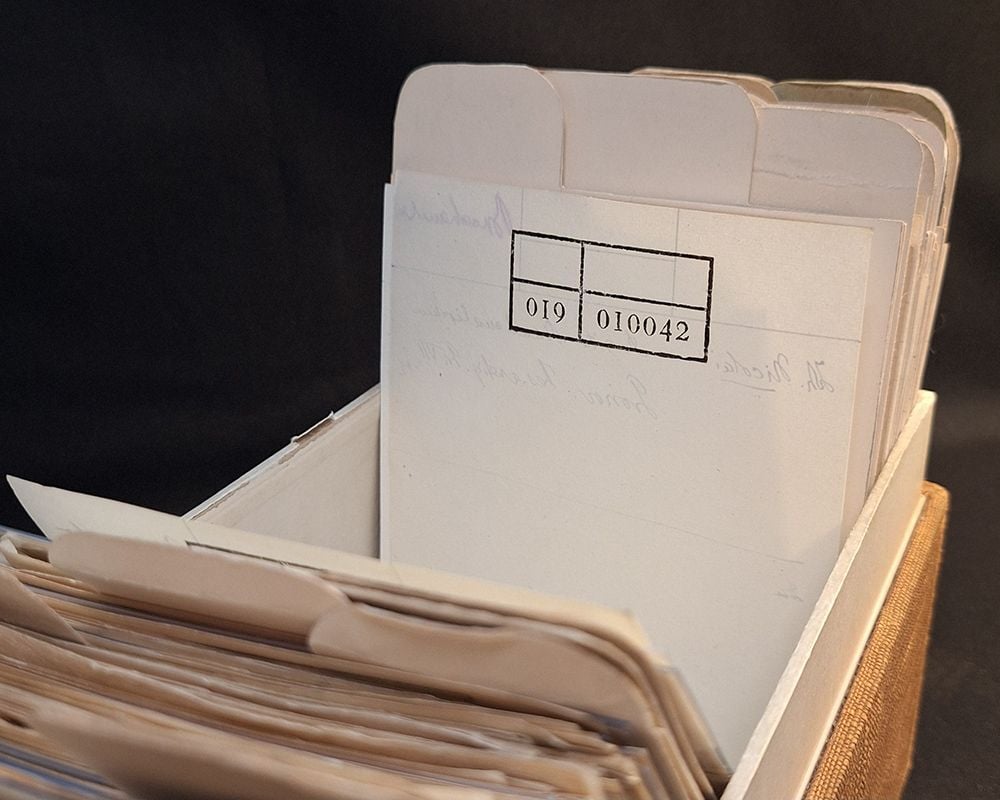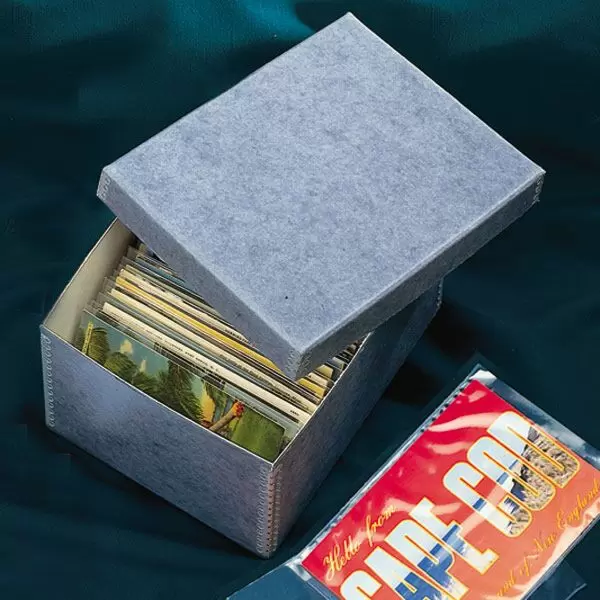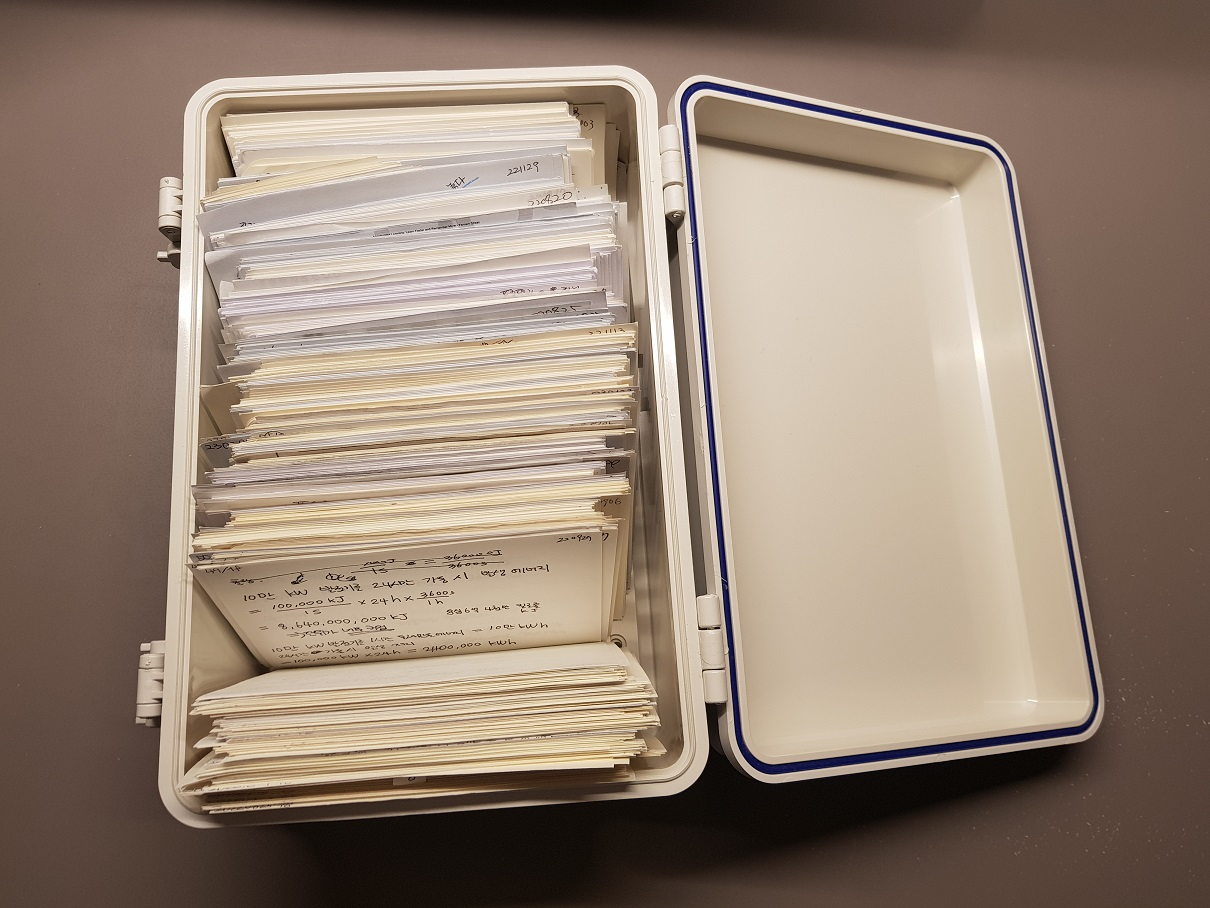Reply to u/FastSascha at https://old.reddit.com/r/Zettelkasten/comments/1ilvvnc/you_need_to_first_define_the_zettlekasten_methoda/mc01tsr/
The primary and really only "innovation" for Luhmann's system was his numbering and filing scheme (which he most likely borrowed and adapted from prior sources). His particular scheme only serves to provide specific addresses for finding his notes. Regardless of doing this explicitly, everyone's notes have a physical address and can be cross referenced or linked in any variety of ways. In John Locke's commonplacing method of 1685/1706 he provided an alternate (but equivalent method) of addressing and allowing the finding of notes. Whether you address them specifically or not doesn't change their shape, only the speed by which they may be found. This may shift an affordance of using such a system, but it is invariant from the form of the system. What I'm saying is that the form and shape of Luhmann's notes is identical to the huge swath of prior art within intellectual history. He was not doing something astoundingly new or different. By analogy he was making the same Acheulean hand axe everyone else was making; it's not as if he figured out a way to lash his axe to a stick and then subsequently threw it to invent the spear.
When I say the method was commonplace at the time, I mean that a broad variety of people used it for similar reasons, for similar outputs, and in incredibly similar methods. You can find a large number of treatises on how to do these methods over time and space, see a variety of examples I've collected in Zotero which I've mentioned several times in the past. Perhaps other German professors weren't using the method(s) as they were slowly dying out over the latter half of the 20th century with the rise and ultimate ubiquity of computers which replaced many of these methods. I'll bet that if probed more deeply they were all doing something and the something they were doing (likely less efficiently and involving less physically evident means) could be seen to be equivalent to Luhmann's.
This also doesn't mean that these methods weren't actively used in a variety of equivalent forms by people as diverse as Aristotle, Cicero, Quintilian, Seneca, Boethius, Thomas Aquinas, Desiderius Erasmus, Rodolphus Agricola, Philip Melancthon, Konrad Gessner, John Locke, Carl Linnaeus, Thomas Harrison, Vincentius Placcius, Gottfried Wilhelm Leibniz, S. D. Goitein, Gotthard Deutsch, Beatrice Webb, Sir James Murray, Marcel Mauss, Claude Lévi-Strauss, Mortimer J. Adler, Niklas Luhmann, Roland Barthes, Umberto Eco, Jacques Barzun, Vladimir Nabokov, George Carlin, Twyla Tharp, Gertrud Bauer, and even Eminem to name but a few better known examples. If you need additional examples to look at, try searching my Hypothesis account for tag:"zettelkasten examples". Take a look at their examples and come back to me and tell me that beyond the idiosyncrasies of their individual use that they weren't all doing the same thing in roughly the same ways and for roughly the same purposes. While the modalities (digital or analog) and substrates (notebooks, slips, pen, pencil, electrons on silicon, other) may have differed, the thing they were doing and the forms it took are all equivalent.
Beyond this, the only thing really unique about Luhmann's notes were that he made them on subjects that he had an interest, the same way that your notes are different from mine. But broadly speaking, they all have the same sort of form, function, and general topology.
If these general methods were so uncommon, how is it that all the manuals on note taking are all so incredibly similar in their prescriptions? How is it that Marbach can do an exhibition in 2013 featuring 6 different zettelkasten, all ostensibly different, but all very much the same?
Perhaps the easier way to see it all is to call them indexed databases. Yours touches on your fiction, exercise, and nutrition; Luhmann's focuses on sociology and systems theory; mine looks at intellectual history, information theory, evolution, and mathematics; W. K. Kellogg's 640 drawer system in 1906 focused on manufacturing, distributing and selling Corn Flakes; Jonathan Edwards' focused on Christianity. They all have different contents, but at the end of the day, they're just indexed databases with the same forms and functionalities. Their time periods, modalities, substrates, and efficiencies have differed, but at their core they're all far more similar in structure than they are different.
Perhaps one day, I'll write a deeper treatise with specific definitions and clearer arguments laying out the entire thing, but in the erstwhile, anyone saying that Luhmann's instantiation is somehow more unique than all the others beyond the meaning expressed by Antoine de Saint-Exupéry in The Little Prince is fooling themselves. Instead, I suspect that by realizing you're part of a longer, tried-and-true tradition, your own practice will be far easier and more useful.
The simplicity of the system (or these multiply-named methods) allows for the rise of a tremendous amount of complexity. This resultant complexity can in turn hide the simplicity of the root system.
“To me, you are still nothing more than a little boy who is just like a hundred thousand other little boys. And I have no need of you. And you, on your part, have no need of me. To you, I am nothing more than a fox like a hundred thousand other foxes. But if you tame me, then we shall need each other. To me, you will be unique in all the world. To you, I shall be unique in all the world..."
I can only hope people choose to tame more than Luhmann.








 Illustration by Beppe Giacobbe
Illustration by Beppe Giacobbe
 via post by u/fer_mese at
via post by u/fer_mese at 